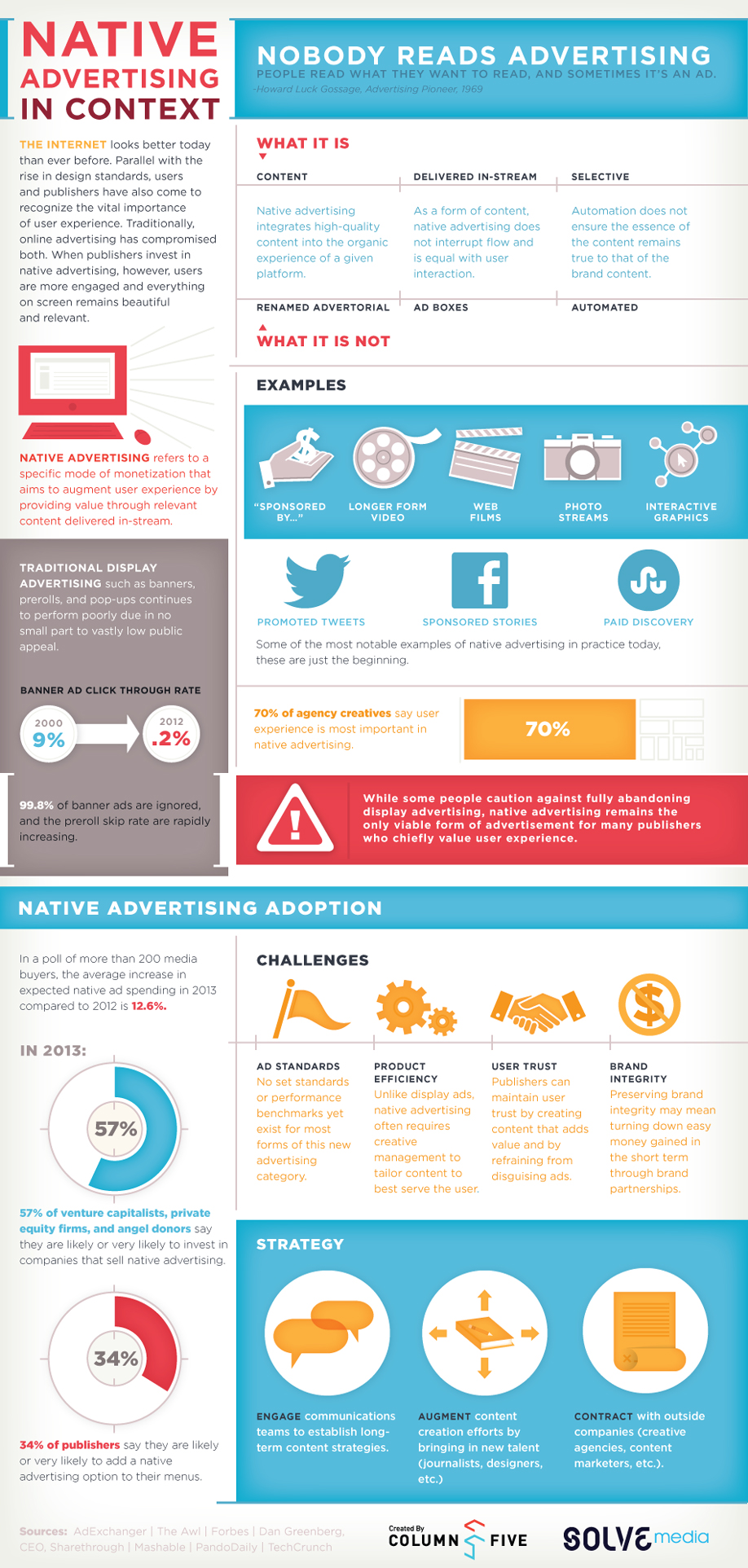Brands
Evaluating Native Advertising in Context [INFOGRAPHIC]
Native advertising – buzzword or legitimate marketing trend? The concept is awesome because it provides an alternative to three key problems: brand/consumer disconnects, user experience, and banner blindness.
It’s not about selling, preaching, manipulating, or persuading. Native advertising is very much an educational, customer experience tool that prioritizes trust, substance, and value. The driving force? Multimedia and content.
The following infographic from Column Five Media and Solve Media walks you through the operational, editorial, and strategic best practices to ensure that your brand’s customers and users come first.
Why this Infographic Rocks
1. It immediately jumps into the ‘whats.’
Native advertising is about high-quality content, organic experiences that complement existing user interaction flows. It’s exceptionally high quality and in many instances, written by true journalists.
2. It addresses an important brand/consumer problem.
Between 2000 and 2012, banner click-through rates have dropped from an average of 9 percent to 2 percent. Consumers ignore banners because they don’t like to be beaten down by ads – which means that advertisers aren’t necessarily deriving value. Native ads are one solution that attempts to bridge this gap. After all, your customers are indirect leaders of your company. Give them something they’ll love.
3. It makes you prioritize the challenges.
Ad standards, product efficiency, user trust, and brand efficiency are all topics that brands need to prioritize when jumping into their native ads strategy.
4. It alleviates cognitive dissonance.
For marketers and advertisers (newbie and experienced alike), the concept of native advertising can be tough to grasp. So here’s what native advertising is not – sponsorships, promoted tweets, web films, sponsored stories, paid discovery, and interactive graphics.
5. It concludes with an awesome jumping off point – you and your team.
You’ve decided that native advertising is awesome. Now what? You need to prioritize your strategy before jumping in. Engage your communication teams, boost content creation by recruiting new talent, and contract externally to boost your distribution.
Room for Improvement
List examples. Make the concept real. Which brands are rocking this strategy? What could be improved. Data and ideas rock, but at the end of the day, it’s results that count.

Image courtesy of Diego Cervo/shutterstock
Get better at your job right now.
Read our monthly newsletter to master content marketing. It’s made for marketers, creators, and everyone in between.




